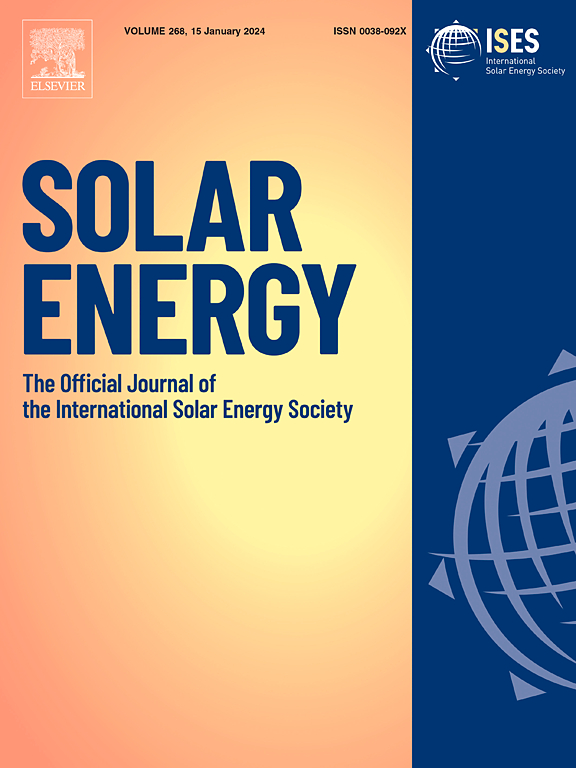An investigation on surface dust removal via continuous droplets impacting for PV application
IF 6
2区 工程技术
Q2 ENERGY & FUELS
引用次数: 0
Abstract
Solar energy offers a promising and sustainable alternative to traditional energy. However, surface soiling can reduce the efficiency of PV panels dramatically. In this paper, we investigate the continuous droplets impacting on dusty surfaces to achieve surface cleaning. The effects of surface wettability, dust types, water volume, and surfactants on the dynamic behavior and macroscopic efficacy of droplet dust removal are analyzed. For distilled water, the superhydrophilic surface achieves the best dust removal with transmittance recovering to 96 % of a clean surface, while the hydrophilic surface is worst. Notable water channels are observed on the hydrophilic surface, which results in a significant contrast in surface transmittance between the interior and exterior of these channels, 90 % and 73 %, respectively. The overall dust-removal performance on the surface is rather poor, and a large amount of water resources are wasted. Interestingly, surfactants solution can disrupt the water channels on the hydrophilic surface relying on sequential sliding and bouncing, thus enhancing the dust removal efficiency. It is found that anionic surfactant (AS) solution demonstrates the optimal performance. The relative dust removal mass is just 48 % using 5 ml water, while it increases to 84 % for AS0.5. This is attributed to the repulsive forces between the negatively charged dust and molecules of anionic surfactant. This finding helps to the self-cleaning applications of water droplet impacting for PV modules.
光伏应用中连续液滴冲击表面除尘的研究
太阳能是一种有前途的、可持续的传统能源替代品。然而,表面污染会大大降低光伏板的效率。在本文中,我们研究了连续液滴冲击灰尘表面以实现表面清洁的方法。分析了表面润湿性、粉尘类型、水量和表面活性剂对微滴动态行为和宏观除尘效果的影响。对于蒸馏水,超亲水表面的除尘效果最好,透光率可恢复到清洁表面的96%,而亲水表面的除尘效果最差。在亲水性表面上观察到明显的水通道,这导致这些通道的内部和外部表面透光率的显著差异,分别为90%和73%。表面整体除尘性能较差,浪费了大量的水资源。有趣的是,表面活性剂溶液可以通过顺序滑动和弹跳破坏亲水表面的水通道,从而提高除尘效率。结果表明,阴离子表面活性剂(AS)溶液性能最佳。使用5毫升水的相对除尘质量仅为48%,而AS0.5则增加到84%。这是由于带负电荷的灰尘和阴离子表面活性剂分子之间的排斥力。这一发现有助于水滴冲击光伏组件的自清洁应用。
本文章由计算机程序翻译,如有差异,请以英文原文为准。
求助全文
约1分钟内获得全文
求助全文
来源期刊

Solar Energy
工程技术-能源与燃料
CiteScore
13.90
自引率
9.00%
发文量
0
审稿时长
47 days
期刊介绍:
Solar Energy welcomes manuscripts presenting information not previously published in journals on any aspect of solar energy research, development, application, measurement or policy. The term "solar energy" in this context includes the indirect uses such as wind energy and biomass
 求助内容:
求助内容: 应助结果提醒方式:
应助结果提醒方式:


